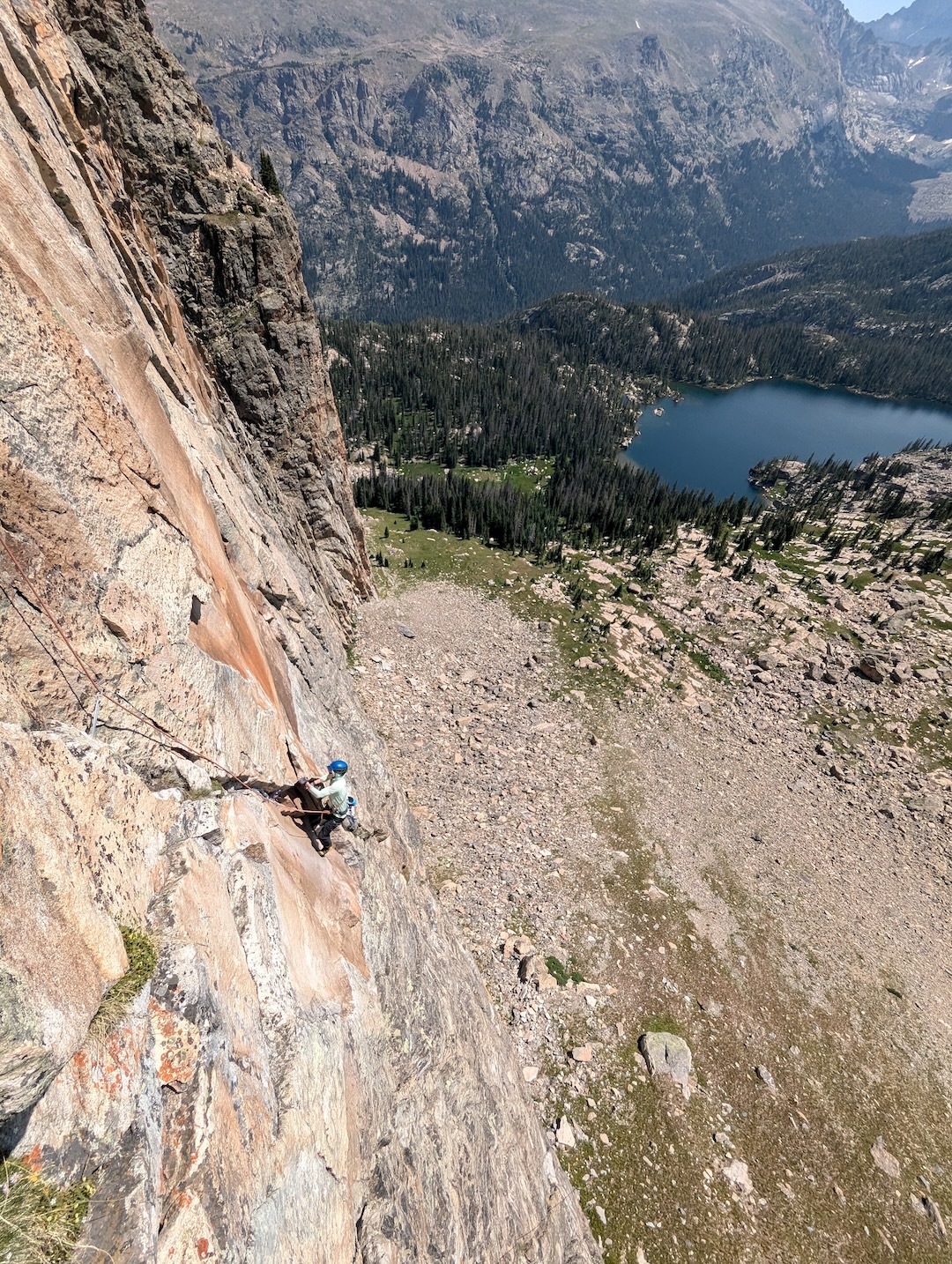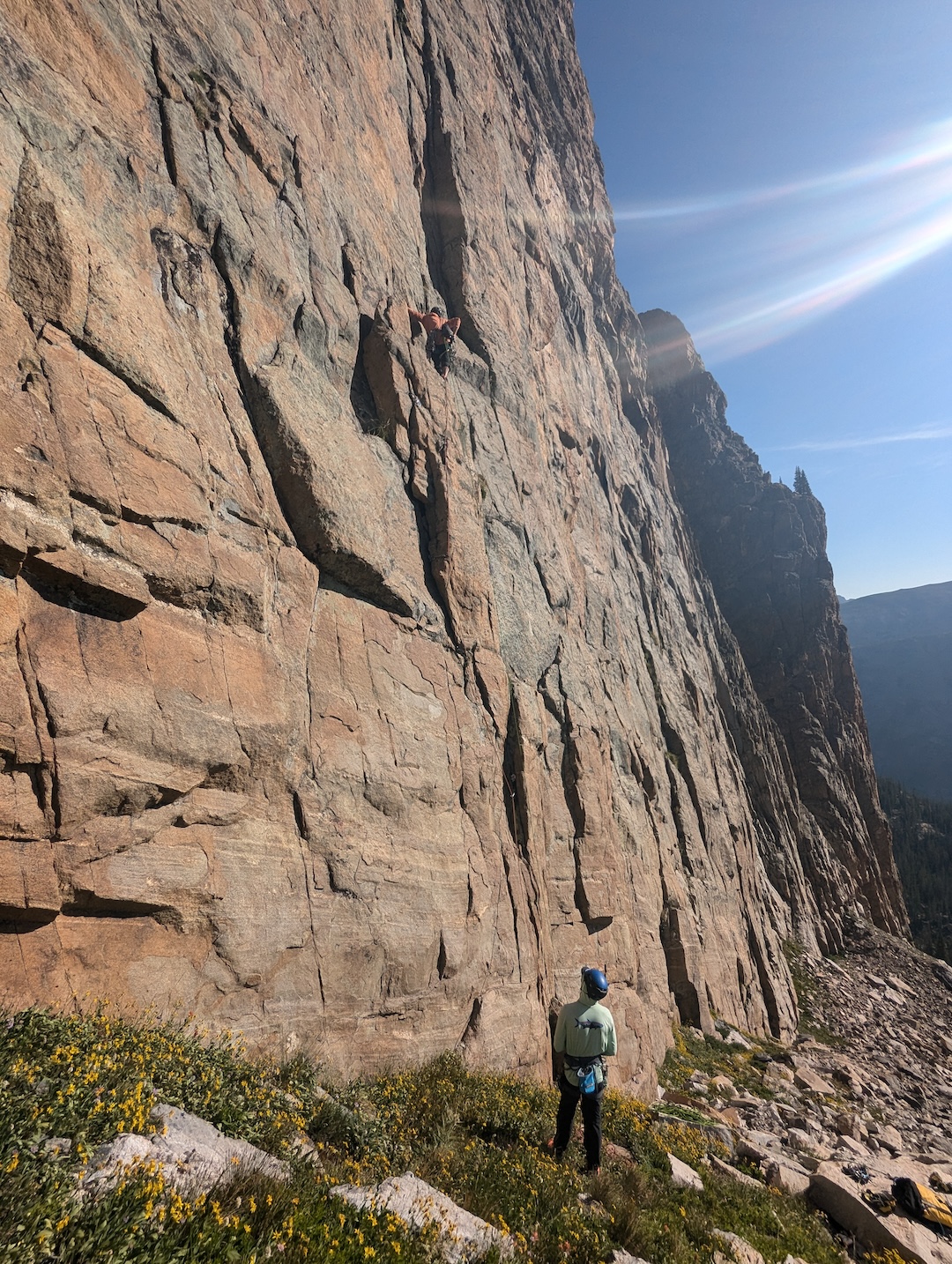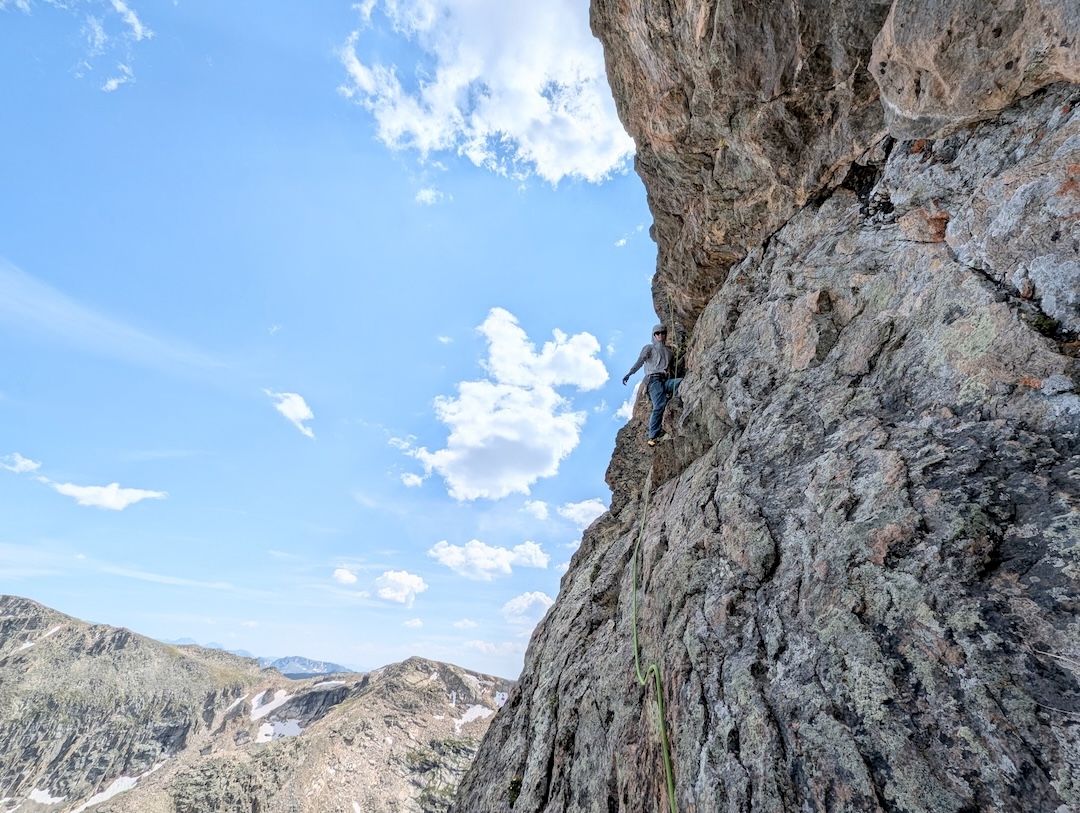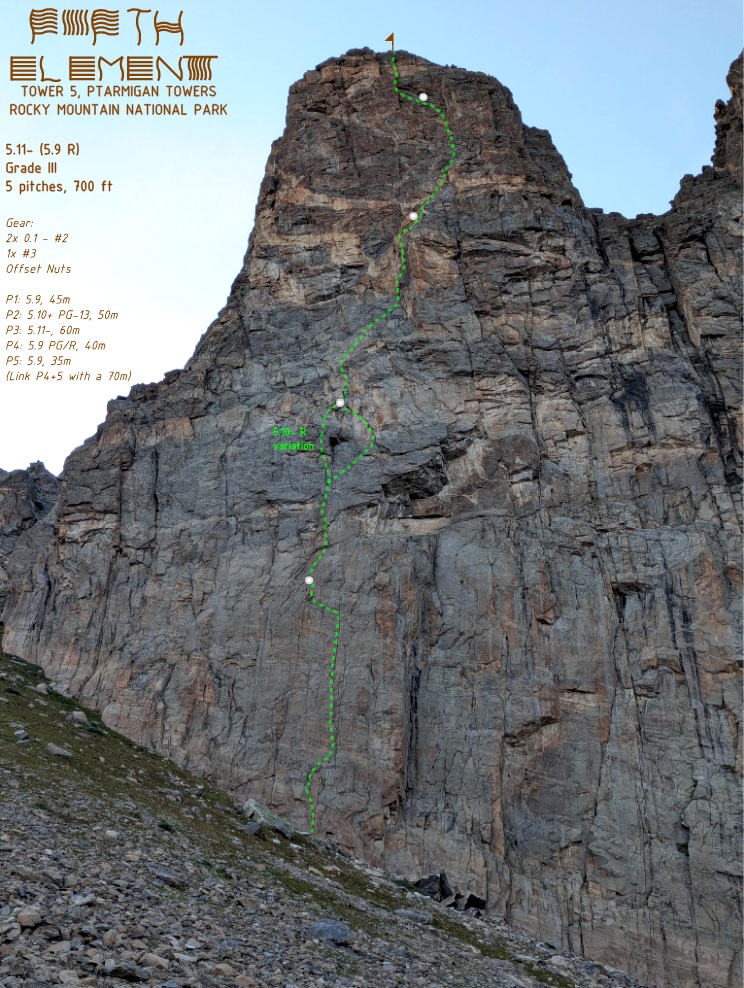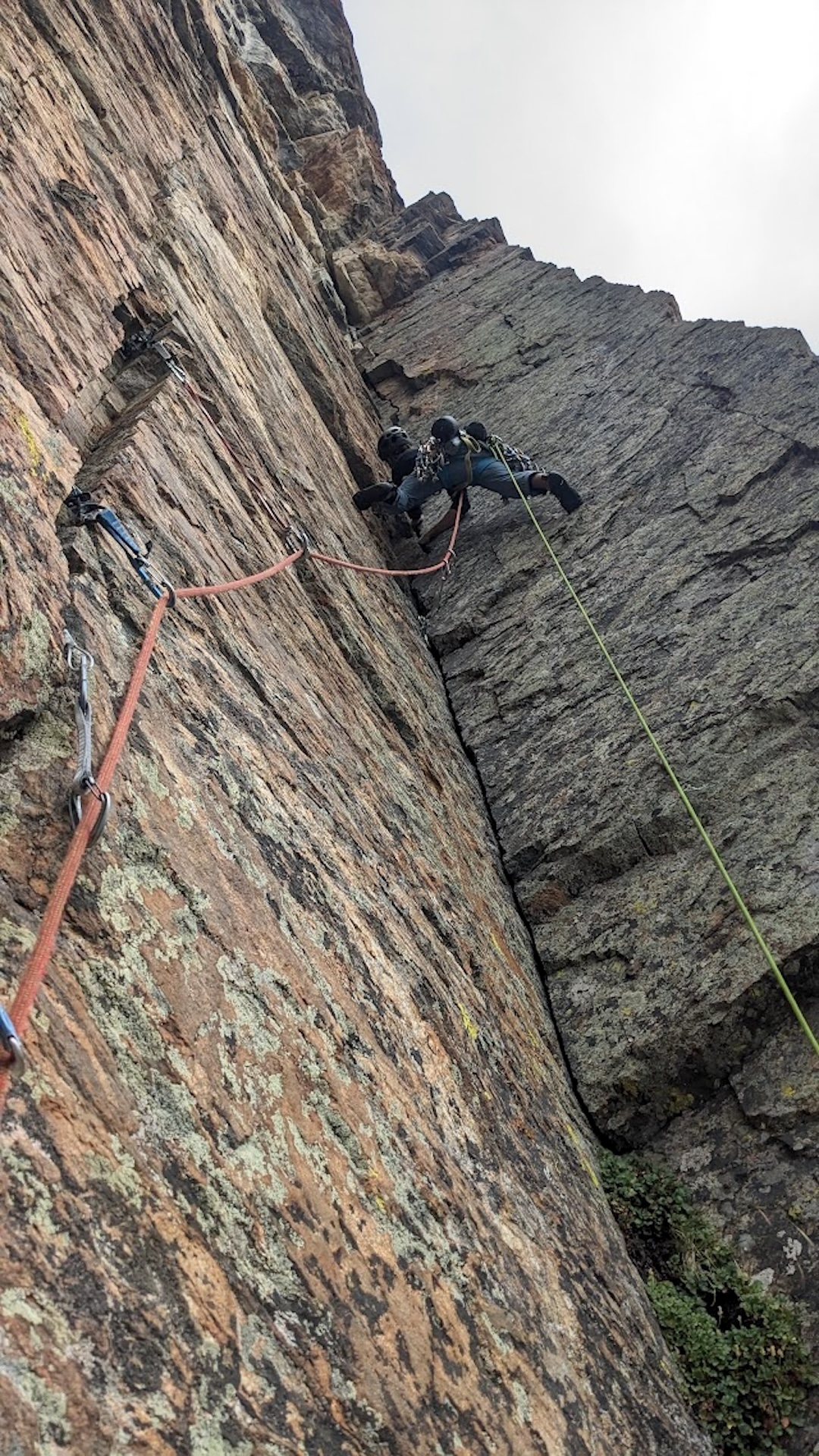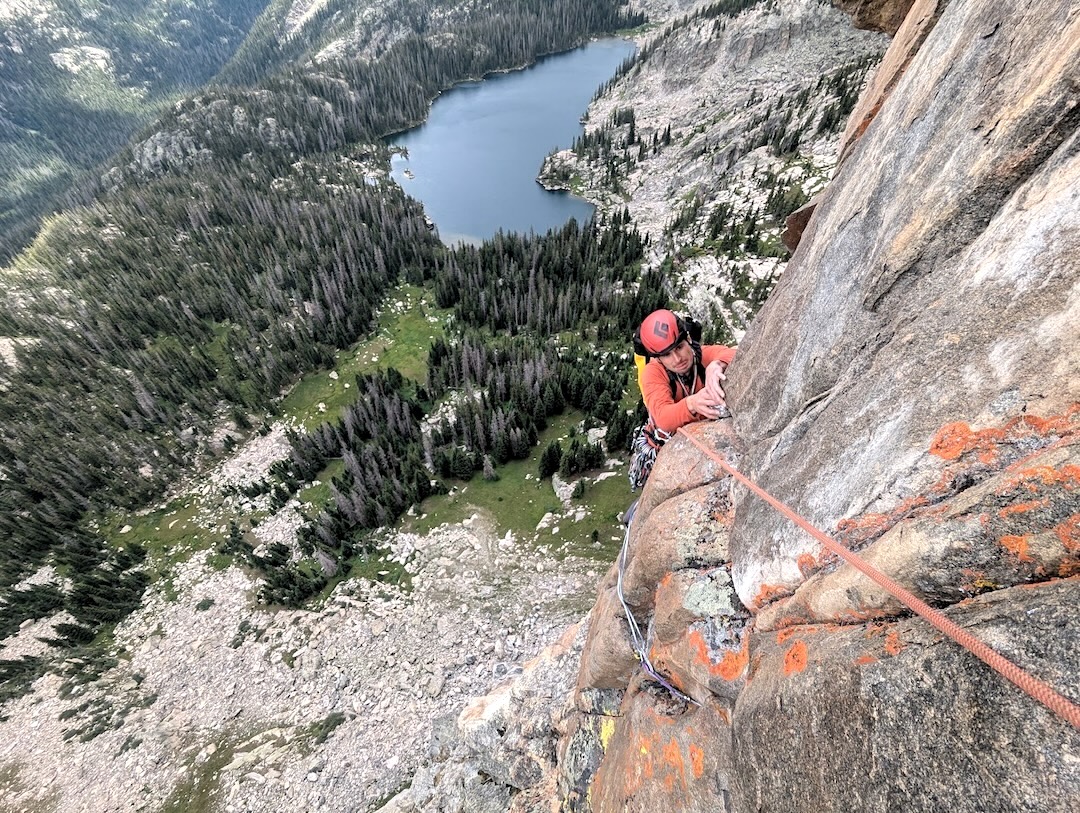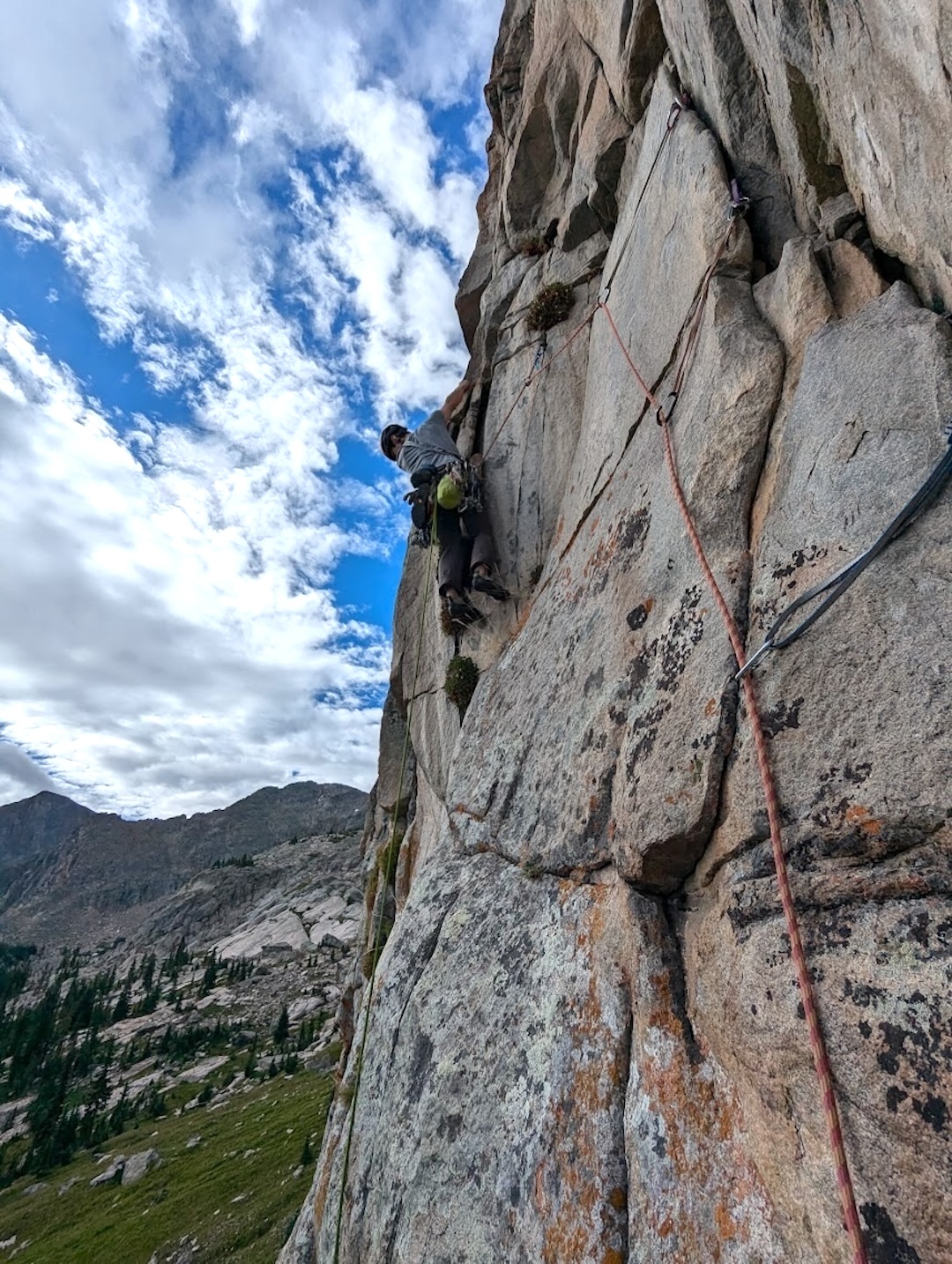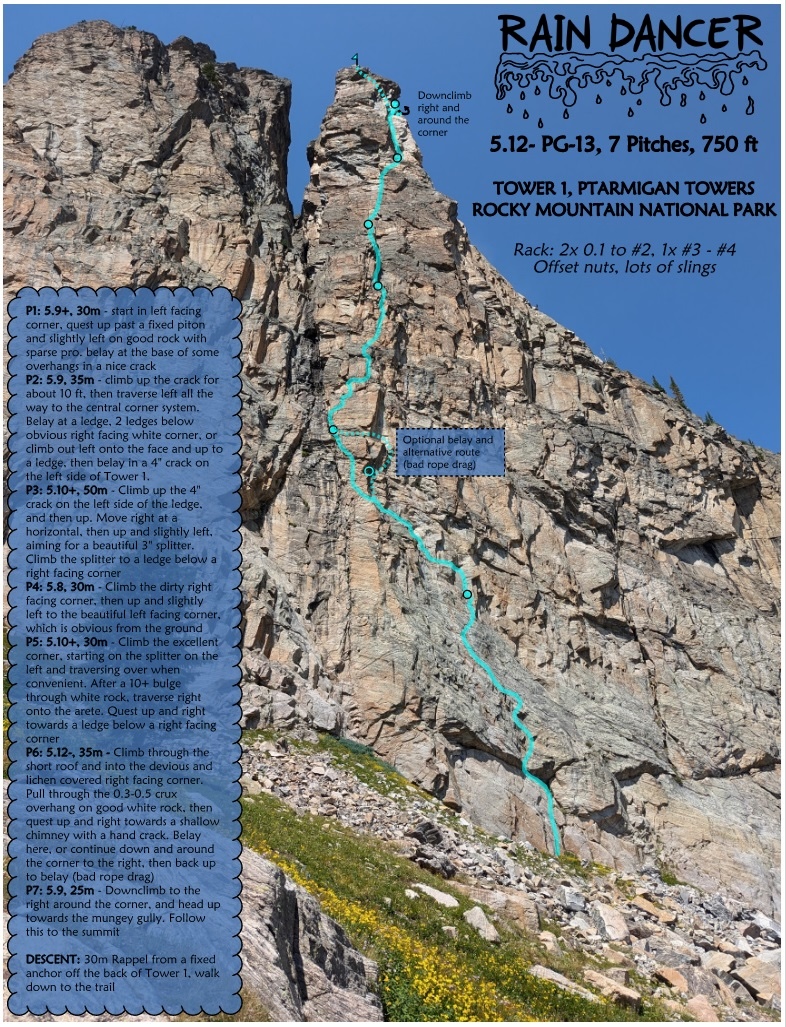Ptarmigan Mountain, Towers 1 and 5, East Faces
Colorado, Rocky Mountains, Rocky Mountain National Park
In August 2024, friends and I established two routes on Ptarmigan Mountain (12,324’) on the west side of Rocky Mountain National Park (RMNP). I first came across the Ptarmigan Towers while flipping through Richard Rossiter’s RMNP guidebook; I hiked out to see them for myself and was amazed at the size and beauty of these monoliths—roughly 700’ to 800’ tall—way deep in the park. The five prominent southeast-facing spires are mostly vertical or overhanging and above treeline. Only Tower 2 and Tower 4 have documented routes in the guidebook, though a short 5.9, Between the Blinds, was established on the south side of Tower 5 in 2022 (AAJ 2023).
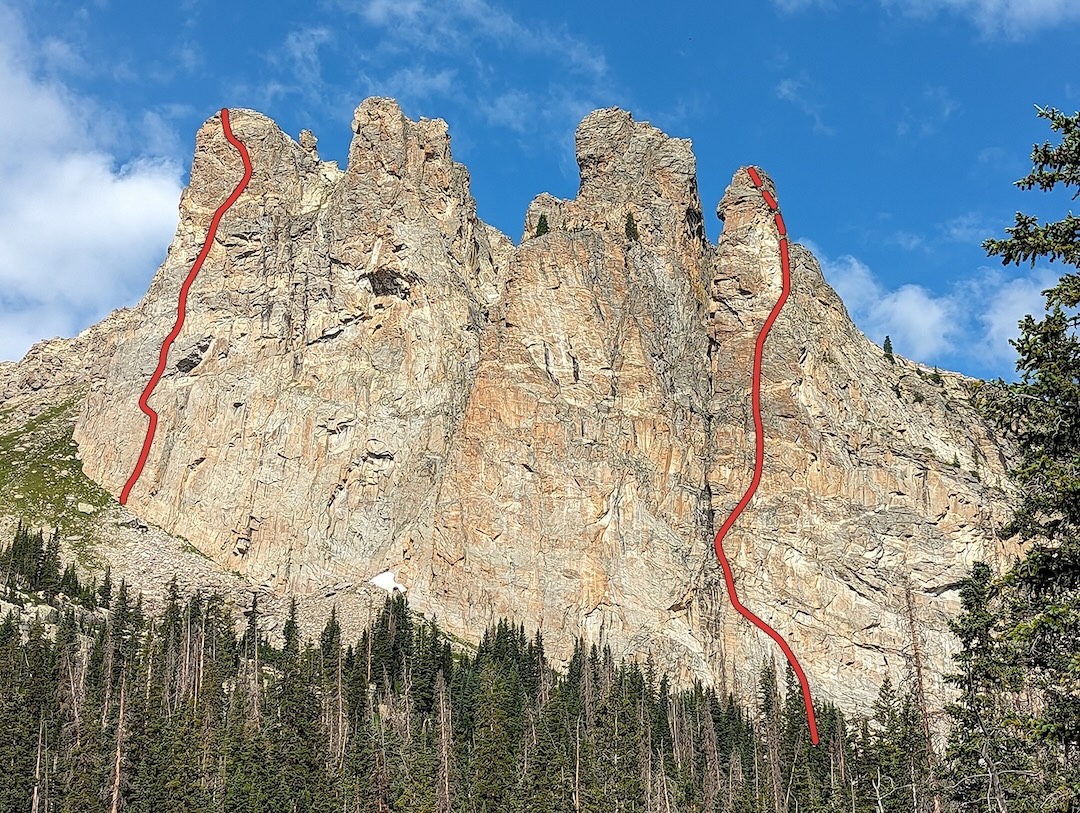
Tower 5 features many crack systems on its impressive east face. Sam Beane, Lyle Harte, and I picked a plumb line up the middle, aiming for a massive left-facing dihedral about halfway up. The rock was good overall, although protection was sparse in places. Every belay was at a good ledge, and the route featured nice cracks and face climbing on solid rock. The final two pitches are steeper but easier, following slightly lower-quality cracks to the summit. The route can get quite hot in the sun in midsummer. Fifth Element (700’, 5 pitches, 5.11- R) was climbed ground-up and onsight by all three climbers on August 3.
Tower 1—the first tower you see from the trail during the approach, rising 1,000’ over Lake Nanita—is the narrowest and most imposing of the group. It is about 750’ high and has a summit that—as Mike Lane and I would learn—requires a rappel or an exposed fifth-class downclimb to escape.
Mike and I established Rain Dancer (750’, 7 pitches, 5.12- PG-13) ground-up in late August, taking a somewhat meandering path toward an obvious left-facing dihedral about two-thirds of the way up. The rock quality varied from loose to bulletproof, with some memorable sections, including the beautiful 5.10+ corner on pitch five that’s easily visible from the ground. The sixth pitch included a fun 5.12- crux: an overhanging number 0.3–0.5 crack on nice white rock with no footholds, climbed clean after several attempts. The route then skirts the massive, loose roofs at the top of the tower by going around to the right (north) side and ascending a dirty but moderate gully.
On our first attempt, on August 23, we got rain on pitch four and had to rappel; we fixed the last rap line to our temporary pitch two anchor. On August 24, we top-roped up to pitch two via a direct line and then continued to the summit. On the crux pitch, a heavy rain squall came in for about 30 minutes, but it was blowing from the west, so the rock stayed mostly dry—hence the Rain Dancer name. We encountered an old, rusty piton about 15’ up pitch one but saw no further evidence of previous attempts.
—Michael LaDue


